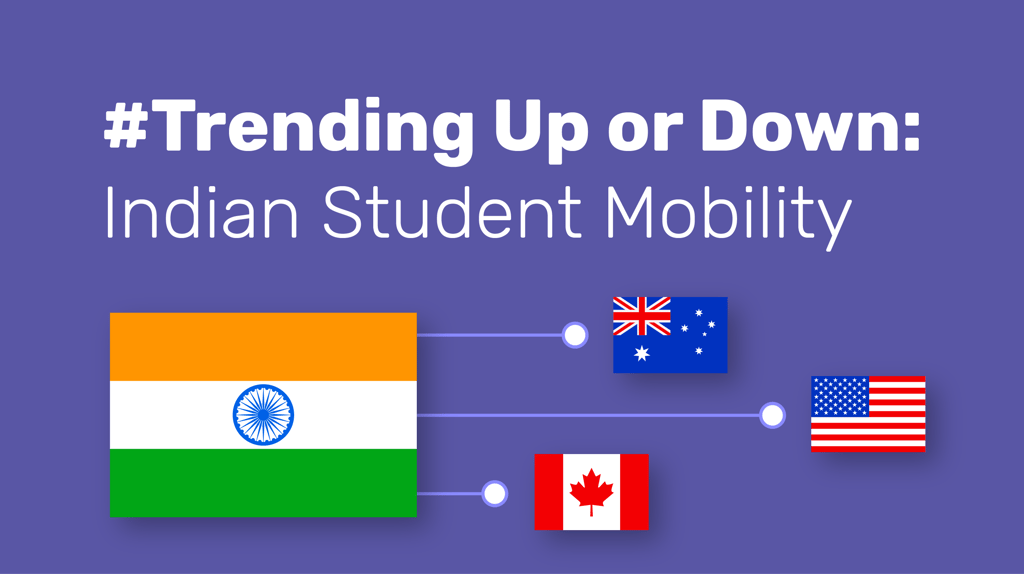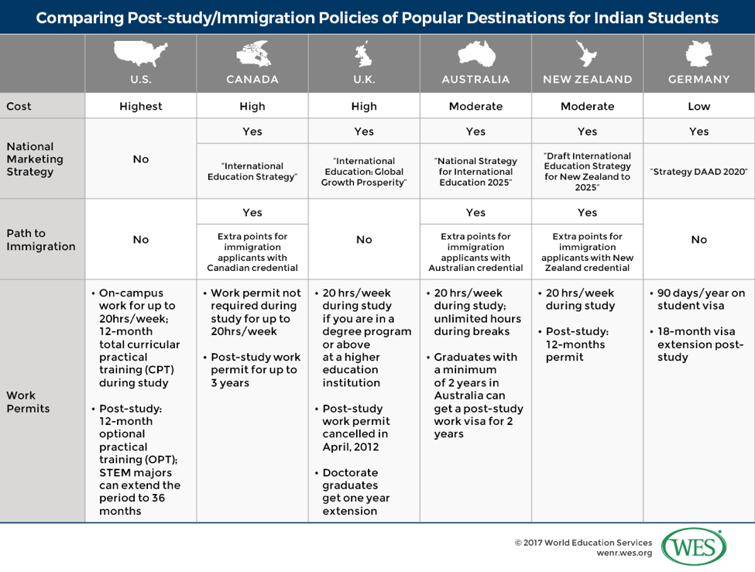
We know that India is weighing heavily on the minds of international recruitment professionals all over the world... especially here in the U.S. How will mobility trends among this growing student population play out? And, where will the U.S. fall in the decision-making process of outbound Indian students?
While the number of international students and specifically Indian students in the U.S. continue to grow, recent trends indicate that the U.S. is losing ground to Canada and Australia in the competition for Indian students.
Why? We'll explore that question in this week's blog. And we will explore what you can do about it in greater detail at our International Student Recruitment Bootcamp in San Diego this February. Come learn with us, CGACC and our expert faculty – names from our industry you've known and respected for a very long time. We've limited this hands-on event to 100 attendees, so that the 1.5 days of learning and networking is intense and highly valuable to you.
Read on to see how the U.S. and your institution in particular should be approaching the Indian student market. And we hope to see you at AIRC and then ICEF in Florida starting next week.
Oh! and don't forget to attend our webinar TODAY at 2 p.m. EST on Wielding the Power of Data for International Student Recruitment.
We love IIE for all of their conscientious data collecting, analysis and publishing. From their work, we know Indian students studying in the U.S. has increased with a 12% growth rate since 2015/16, the increasing number of Indian students studying in the U.S. has outpaced that of China for the third year in a row. However, year on year, growth has slowed significantly down to 12% from 25% in 2014/15.
According to the latest Open Doors data from IIE, India is still the second leading country of origin for international students currently studying in the U.S. – 17.3% of the total, following China at 32.5%. These two top contenders far outstrip the competition, with South Korea (5.4%) and Saudi Arabia (4.9%) falling year on year by 3.8% and 14.2% respectively.
Although some of this transition is due to unfavorable political situations in the home country (see our blog post on Saudi Arabia from last week), we are still witnessing the impact of global perceptions of the current U.S. political and social climate.
Looking at trends of Indian student mobility, we observe the transitions from 2005/06 through 2014/15, with particular interest in the slow growth in the U.S. in comparison with the dramatic growth in movement to Canada, New Zealand and even Germany. Worth comparing just in the past year: the ease of entry and career potential for international students in countries like Canada and Australia. See the data below from WES to explore these growth changes.

Is Perception Really Reality? Yep!
So, why has the U.S. been losing the competition for these students? This can be boiled down to a number of factors, many of which involve the global perception of political and immigration regulations.
Consider that perception is just as much a factor as reality. Government rhetoric coming out of the U.K. and U.S. is playing a role here.
As we see in the chart below, the U.S. is the only top 7 destination without a national marketing strategy to draw in international students, and one of only three without a clear path to immigration. These are two major influential factors in the decision making process of international students. They influence perceptions about the open-mindedness, safety and stability of the nation and their prospective study experience.
And we know you've seen this: talk to almost any international student and very quickly, the topic of job prospects comes up.
Now, some might say that Education USA out of the U.S. State Department is a national marketing strategy. Others might disagree with that perspective. And currently, there are messages coming out of Washington, D.C., that challenge the premise for OPT and H1-B visas. These are not messages Indian students, their parents and agents want to hear.
 We have seen this reality reflected in the aftermath of the U.K.'s increasing nationalism, where the number of Indian students attending U.K. institutions has experienced dramatic and tumultuous transformations. In an article chronicling how Indian students fell out of love with the U.K., the online publication Quartz released relevant data: “the Higher Education Statistics Agency, which collects statistics on public-funded British higher education, shows that the number of Indian students who enrolled there declined from 39,090 in 2010-11 to 18,320 in 2014-15. That’s a fall of 53.1 percent.”
We have seen this reality reflected in the aftermath of the U.K.'s increasing nationalism, where the number of Indian students attending U.K. institutions has experienced dramatic and tumultuous transformations. In an article chronicling how Indian students fell out of love with the U.K., the online publication Quartz released relevant data: “the Higher Education Statistics Agency, which collects statistics on public-funded British higher education, shows that the number of Indian students who enrolled there declined from 39,090 in 2010-11 to 18,320 in 2014-15. That’s a fall of 53.1 percent.”
Much of this decline began in 2012 with the removal of the post-study work visa – raising concerns in the U.S. around possible changes to the OPT and the H1-B visa under the current U.S. administration. Indian students are highly concerned with gaining practical work experience and the opportunity to recoup their investment in their host country. The possible removal or alteration of this program has many students questioning the value of coming to the U.S. and the high cost of our educational opportunities.
What does all of this mean?
It means that perceptions are powerful. Many international students, especially Indian students, perceive changes in political policy to be tied to national sentiment – calling into question issues of personal safety and wellbeing in a potentially unwelcoming, even aggressive, environment.
We know that there is not much you or your institution can personally do to counter these trends, but you can actively market the career preparation and career opportunities your institution provides to international students. That, along with the fantastic student interactions with peers and faculty on your campus.
We're going to tell you the same things we always do – when times get tough, speak directly to your prospective students with messages that resonate with their needs, wants and desires. We know that the Indian audience right now is concerned with safety, a welcoming environment, high quality education and work opportuntities. What does your institution have to offer in these areas? Are you putting the right messages in front of your audience?
Be specific in your messaging. Generic online ads and web content are abundant and typically dismissed out of hand. Mention specific programs, professors, student experiences. Help your prospects truly understand and feel the value your institution offers. Differentiate yourself, because, well...competition.
As always, we ask you to remind all of your international student audiences #youarewelcomehere. If you need help in any of these areas, you know where to find us.
How are you approaching the Indian student market right now? Where do you see the trends leading us? Let us know in the comments.

